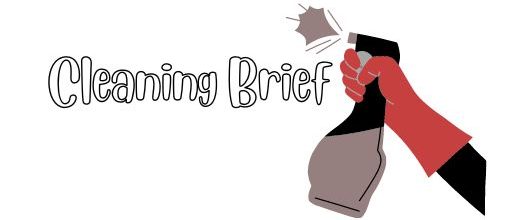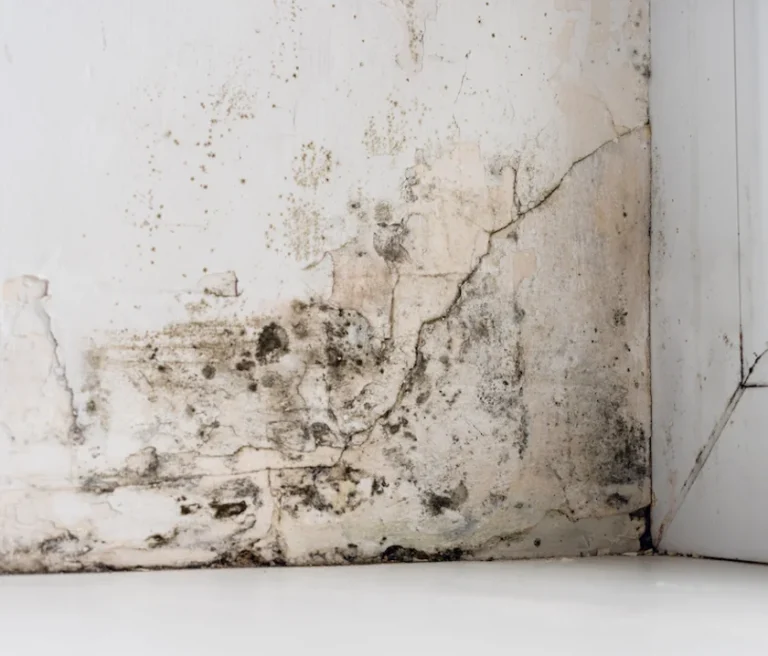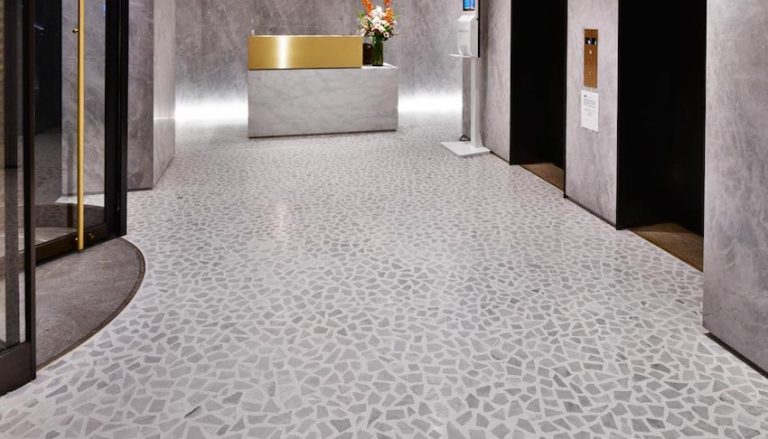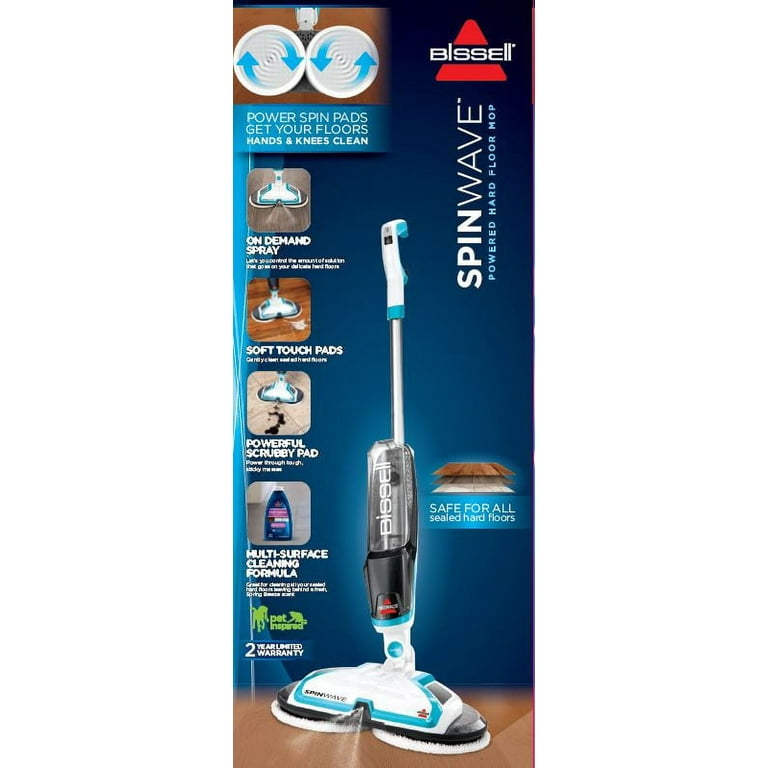How to Clean Mold off Hardwood Floors: Ultimate Guide
To clean mold off hardwood floors, mix equal parts of water and vinegar in a spray bottle. Hardwood floors are a popular choice for many homeowners, offering a timeless and elegant look to any space.
However, one common issue that can arise with hardwood floors is the presence of mold. Mold can not only be unsightly but also pose potential health hazards if left untreated. Therefore, knowing how to properly clean mold off hardwood floors is essential.
We will provide you with simple yet effective methods to remove mold from your hardwood floors, allowing you to maintain a clean and healthy living environment.
:max_bytes(150000):strip_icc()/SPR-how-to-deep-cleaning-house-7152794-Hero-01-e5cd99973ec24e69b00b5ee6b992f760.jpg)
Credit: www.thespruce.com
Identifying Mold On Hardwood Floors
Mold growth on hardwood floors can be a cause for concern as it not only affects the aesthetics of your home but also poses health risks. Identifying mold growth early on is crucial for effective remediation. In this section, we will explore the signs of mold growth and common areas where mold tends to thrive on hardwood floors.
Signs Of Mold Growth
Mold growth may not always be visible to the naked eye, but there are some telltale signs that can indicate its presence. When inspecting your hardwood floors, be on the lookout for the following:
- Discoloration: Mold can cause dark spots or patches on the surface of your hardwood floors, often appearing black or greenish in color.
- Musty Odor: If you notice a persistent musty smell in a particular area of your home, it could be a sign of mold growth.
- Warped or Cupped Wood: Mold thrives in moist environments, and prolonged exposure to moisture can cause hardwood to warp or cup.
- Peeling or Blistering Finish: Mold growth underneath the finish can cause it to bubble, peel, or blister, indicating a potential mold problem.
Common Areas For Mold Growth
Mold tends to grow in areas that provide a suitable environment for its development. When it comes to hardwood floors, these are some common areas where mold can thrive:
| Common Areas for Mold Growth on Hardwood Floors |
|---|
| Kitchen or bathroom near leaky pipes or faucets that create moisture on the floor. |
| Basements or crawl spaces with poor ventilation or dampness issues. |
| Areas near windows or doors where moisture can penetrate. |
| Rooms with high humidity levels, such as laundry rooms or bathrooms without proper ventilation. |
Regularly inspecting these areas and being proactive in addressing any signs of mold growth can help prevent further damage to your hardwood floors and protect the health of your home environment.
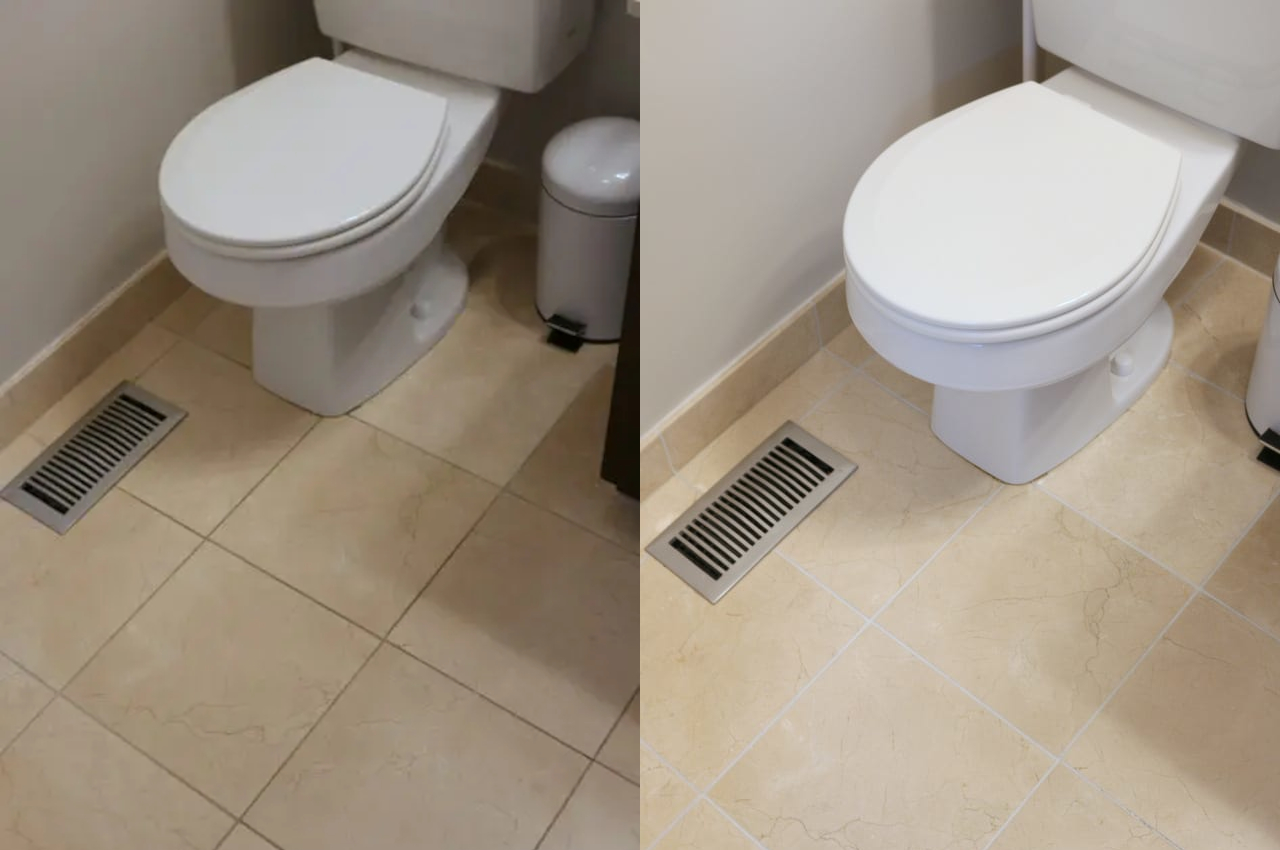
Credit: www.yankodesign.com
Preparing To Clean Mold
Mold on hardwood floors can be a health hazard and cause damage to the flooring if not properly treated. Before you jump into cleaning, it’s important to take certain steps to prepare yourself and the area. This will help ensure a safe and efficient cleaning process. Let’s explore the necessary supplies you’ll require along with some vital safety precautions you should adhere to when dealing with mold on hardwood floors.
Gathering Necessary Supplies
Before you begin cleaning the mold off your hardwood floors, it’s essential to gather all the necessary supplies. Having everything you need ready will save you time and effort during the cleaning process. Here are the supplies you’ll require:
| Supplies | Quantity |
|---|---|
| Mild detergent or specialized mold cleaner | 1 bottle |
| Bucket | 1 |
| Soft-bristle brush or sponge | 1 |
| Clean cloth or microfiber towel | 2-3 |
| Protective gloves | A pair |
| Face mask or respirator | 1 |
| Protective goggles | 1 pair |
| Trash bag | 1 |
Safety Precautions
When it comes to dealing with mold on hardwood floors, safety should be your utmost priority. Follow these safety precautions to protect yourself from any potential health risks:
- Open windows and doors to ensure proper ventilation.
- Put on protective gloves, a face mask or respirator, as well as protective goggles.
- Keep children and pets away from the area during the cleaning process.
- Dampen the moldy area before cleaning to minimize the spread of spores.
- Seal off the affected area from the rest of the house using plastic sheeting or painter’s tape.
- Avoid mixing cleaning products, as this can result in toxic fumes.
- Dispose of all contaminated materials in a sealed trash bag.
- After cleaning, wash your hands thoroughly with soap and water.
By following these safety precautions, you can ensure your well-being while effectively tackling the mold on your hardwood floors. Now that you’re prepared with all the necessary supplies and safety measures, you’re ready to move on to the actual cleaning process. Stay tuned for our next blog post on
Cleaning Mold From Hardwood Floors
To clean mold off hardwood floors, start by removing excess moisture and debris. Then, use a mixture of water and vinegar to scrub the affected areas. For stubborn mold, consider using hydrogen peroxide or a commercial mold remover. After cleaning, ensure the area is thoroughly dried to prevent further mold growth.
Cleaning Mold from Hardwood Floors Mold on hardwood floors can be a common and troublesome issue for many homeowners. It is important to address mold growth promptly to prevent any damage. When dealing with mold on hardwood floors, it is crucial to follow the appropriate cleaning methods to ensure thorough removal.Removing Surface Mold
When tackling surface mold on hardwood floors, begin by combining equal parts of distilled white vinegar and water in a spray bottle. Spray the affected area and let it sit for a few minutes before wiping the surface with a clean cloth. For stubborn areas, use a soft-bristle brush to scrub the mold gently until it is removed. Once the mold is gone, thoroughly dry the area with a clean, dry cloth.Treating Embedded Mold
For embedded mold that has infiltrated the wood’s pores, a more intensive approach is necessary. Mix a solution of one part bleach to four parts water in a bucket. Using gloves and a sponge, apply the solution to the affected areas, being careful not to saturate the wood. Allow the solution to sit for a few minutes, then gently scrub the area with a soft-bristled brush. Afterward, wipe the area with a clean, damp cloth and allow it to air dry. By following these methods for removing mold from hardwood floors, you can effectively eliminate mold and prevent its recurrence. Regularly inspecting and maintaining your hardwood floors can help in early detection and intervention, ensuring a clean and mold-free living space.Preventing Future Mold Growth
To prevent future mold growth on hardwood floors, it’s crucial to implement a few preventive measures that will help maintain a clean and mold-free environment. By taking the proper steps, you can ensure the longevity of your hardwood floors and keep them looking pristine. This section will focus on two key areas that are essential in preventing mold growth: maintaining proper humidity levels and implementing effective cleaning practices.
Maintaining Proper Humidity Levels
Mold thrives in environments with high humidity levels, so it’s vital to keep the humidity in check to prevent mold growth on hardwood floors. Here’s what you can do to maintain the right humidity levels:
- Use a dehumidifier in areas prone to high humidity, such as basements or bathrooms, to reduce excess moisture in the air.
- Keep the windows open whenever possible to improve air circulation and prevent moisture buildup.
- Monitor the humidity levels regularly using a hygrometer and aim for a range between 30% and 50%.
- If the humidity exceeds 50%, use air conditioners or ventilation fans to lower the moisture levels.
Effective Cleaning Practices
Regular cleaning is essential to prevent mold growth on hardwood floors. Here are some effective cleaning practices you can implement:
- Sweep or vacuum your hardwood floors at least once a week to remove any dust, dirt, or debris that can trap moisture.
- Wipe up spills and any standing water immediately to prevent moisture from seeping into the wood and creating a breeding ground for mold.
- Use a damp mop with a mild, vinegar-based solution to clean your hardwood floors thoroughly. Avoid using excessive water as it can penetrate the wood and promote mold growth.
- Regularly inspect your floors for any signs of mold or mildew. If you notice any, address the issue promptly by using a mixture of water and vinegar or a specialized hardwood floor cleaner.
By maintaining proper humidity levels and implementing effective cleaning practices, you can significantly reduce the risk of mold growth on your hardwood floors. These simple yet crucial steps will help prolong the life of your floors and keep them looking their best for years to come.
Seeking Professional Help
Dealing with mold on hardwood floors can be a challenging and potentially hazardous task. While some small mold patches can be safely removed using DIY methods, there are situations where seeking professional help becomes necessary. Knowing when to consult a professional and choosing the right mold remediation service are crucial steps in ensuring the safety and effectiveness of the mold removal process.
When To Consult A Professional
If you notice any of the following signs, it’s advisable to consult a professional for mold removal:
- Extensive mold growth: If the mold covers a large area of your hardwood floor, it’s best to call in professionals who specialize in mold remediation.
- Persistent mold recurrence: If you’ve attempted to remove the mold multiple times but it keeps coming back, it’s an indication that there might be an underlying issue that needs professional attention.
- Visible structural damage: If the mold has caused visible damage to your hardwood floors, such as warping, discoloration, or rotting, professional help is necessary to address both the mold and the structural issues.
- Health concerns: If you or any household members experience respiratory issues, allergic reactions, or other health problems that seem to be connected to mold exposure, it’s essential to consult professionals who can safely remove the mold and ensure a healthy environment.
Choosing The Right Mold Remediation Service
When selecting a mold remediation service, consider the following factors to make an informed decision:
- Experience and expertise: Look for a company with a proven track record in dealing with mold removal on hardwood floors. Check for certifications and qualifications that demonstrate their expertise.
- Safety measures: Ensure the professionals follow proper safety protocols and use appropriate protective equipment to minimize health risks during the mold removal process.
- Comprehensive assessment: A reputable mold remediation service will conduct a thorough inspection to identify the root cause of the mold growth and address it effectively.
- Clear pricing and guarantees: Choose a service that provides transparent pricing details and offers guarantees for their work to give you peace of mind.
- References and reviews: Check online reviews and ask for references to gauge the service quality and customer satisfaction.
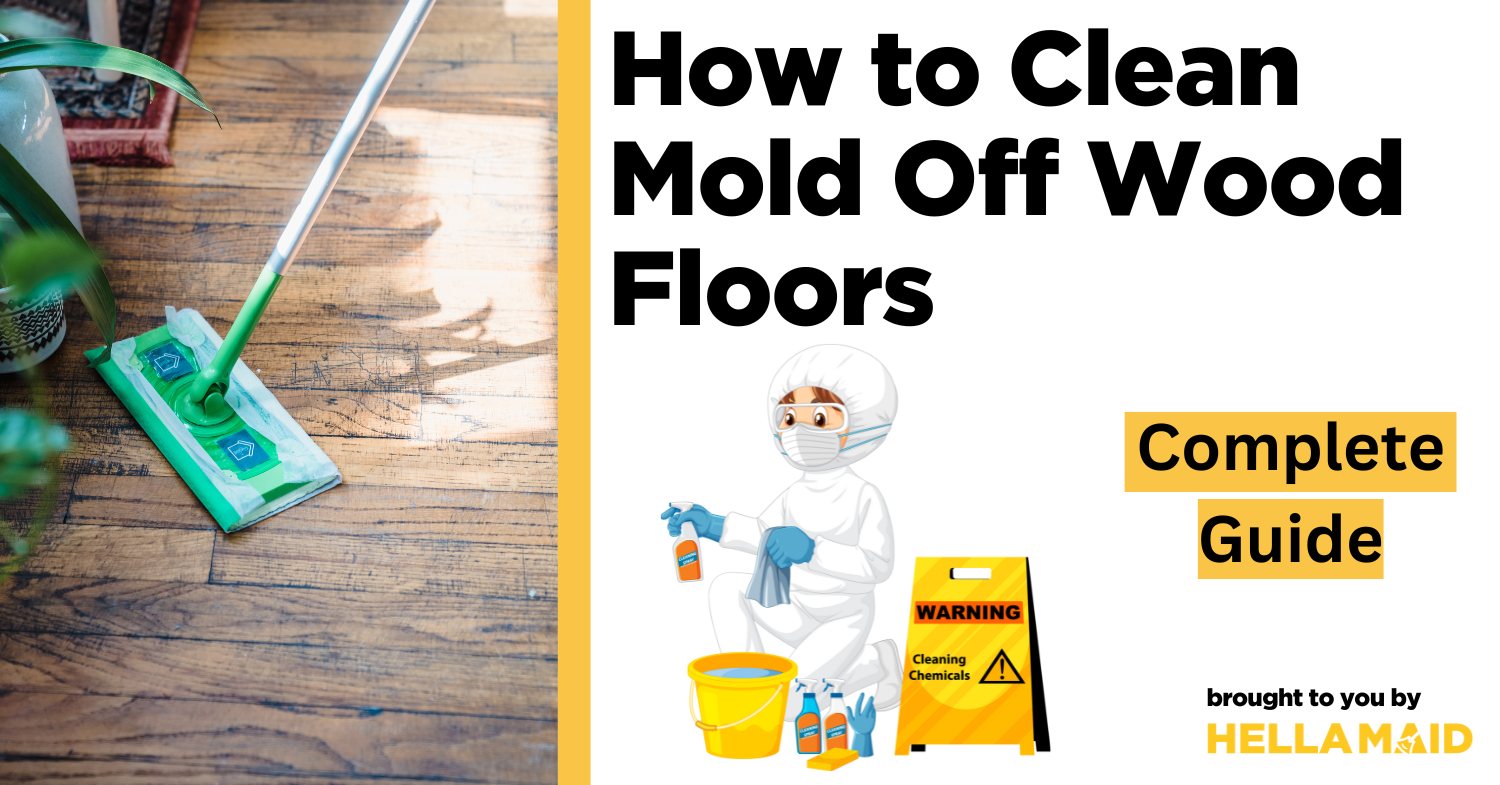
Credit: hellamaid.ca
Frequently Asked Questions For How To Clean Mold Off Hardwood Floors
Can Vinegar Remove Mold From Hardwood Floors?
Yes, vinegar can effectively remove mold from hardwood floors. Mix equal parts of vinegar and water in a spray bottle, then spray the solution onto the moldy areas. Let it sit for a few minutes before scrubbing the mold away with a brush or cloth.
Repeat the process until the mold is completely gone.
How Do You Prevent Mold On Hardwood Floors?
To prevent mold on hardwood floors, it is essential to keep them clean and dry. Regularly clean your floors using a damp mop and a mild cleaner. Ensure proper ventilation in the room to reduce moisture buildup. Fix any leaks or moisture issues immediately and use dehumidifiers if necessary.
Is Bleach Safe To Use On Hardwood Floors To Remove Mold?
While bleach can effectively kill mold, it is not safe to use on hardwood floors. Bleach is harsh and can damage the wood’s finish. Instead, opt for non-toxic alternatives like vinegar or hydrogen peroxide to remove mold from hardwood floors.
These options are effective and safe for your floors.
Conclusion
Maintaining a mold-free hardwood floor requires diligence and prompt action. Regular cleaning, proper ventilation, and controlling humidity are key preventative measures. When faced with mold, quick yet gentle cleaning with appropriate solutions will help restore and protect the floor. Remember, a clean and well-maintained hardwood floor can significantly improve the overall ambiance of your home.
